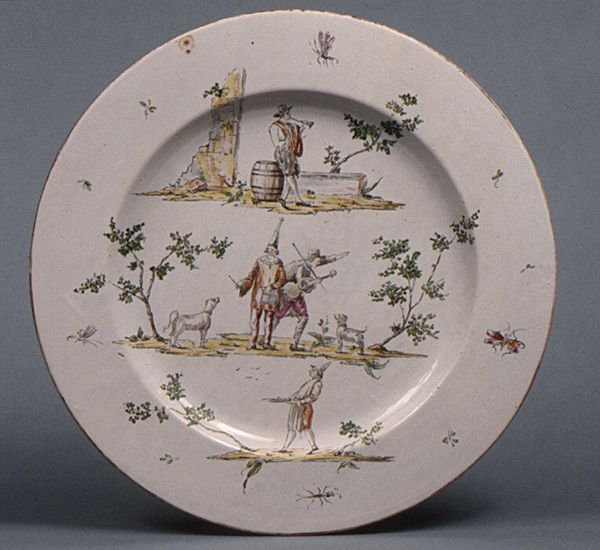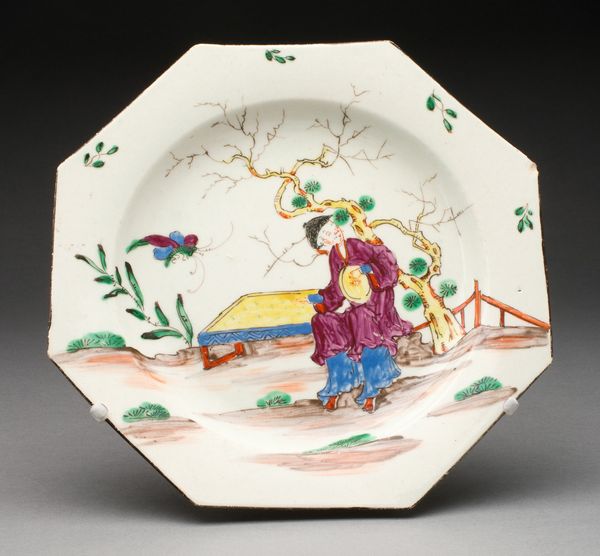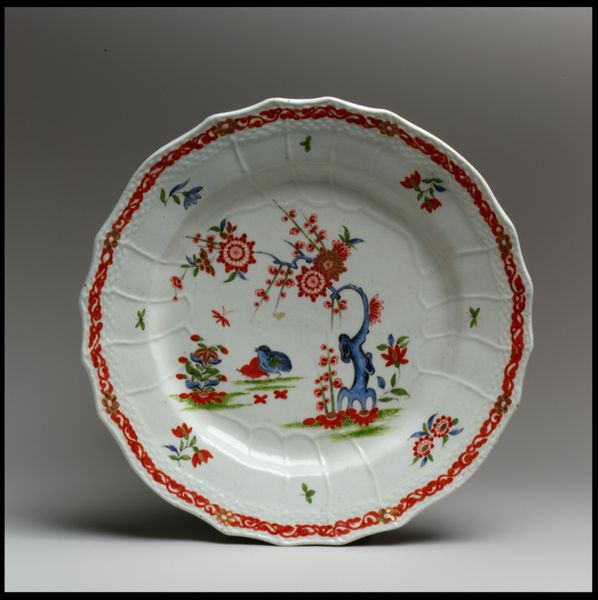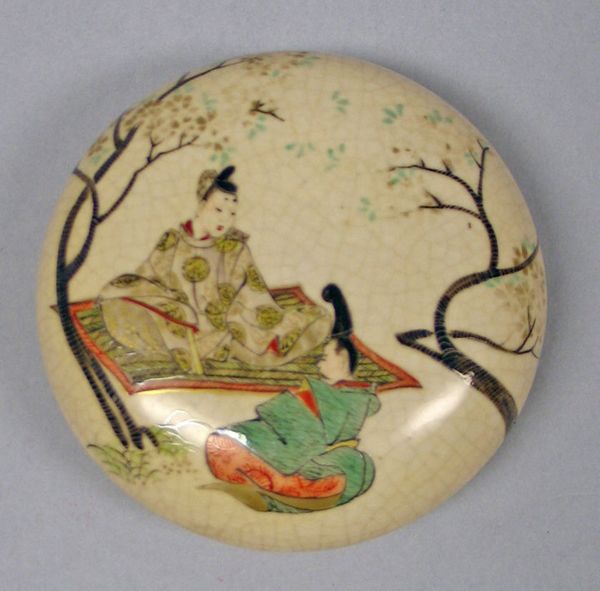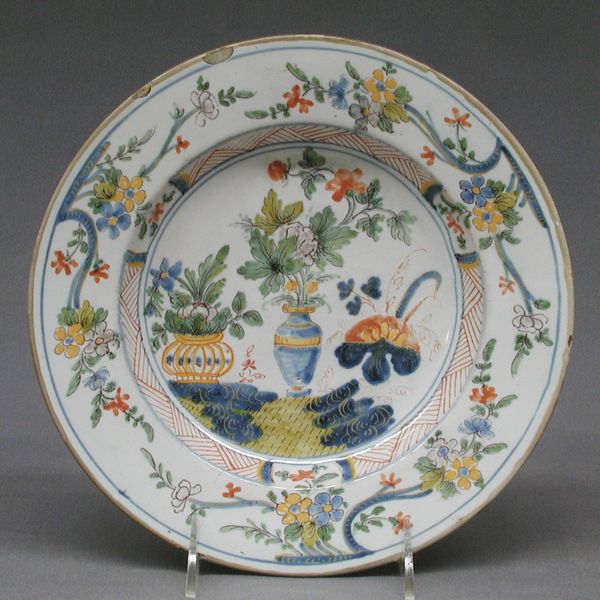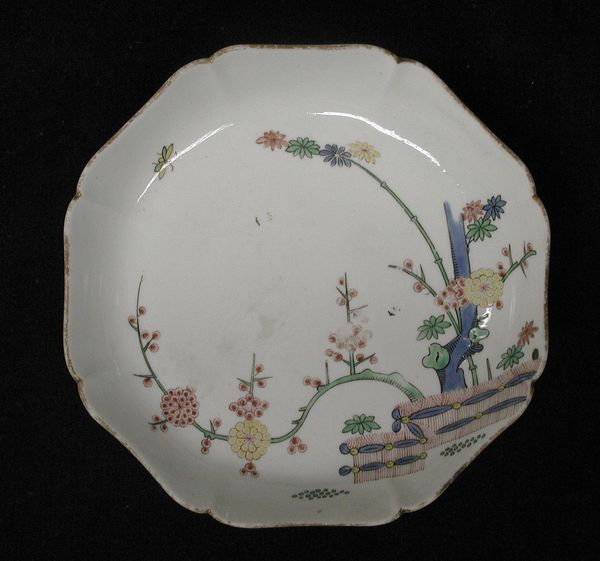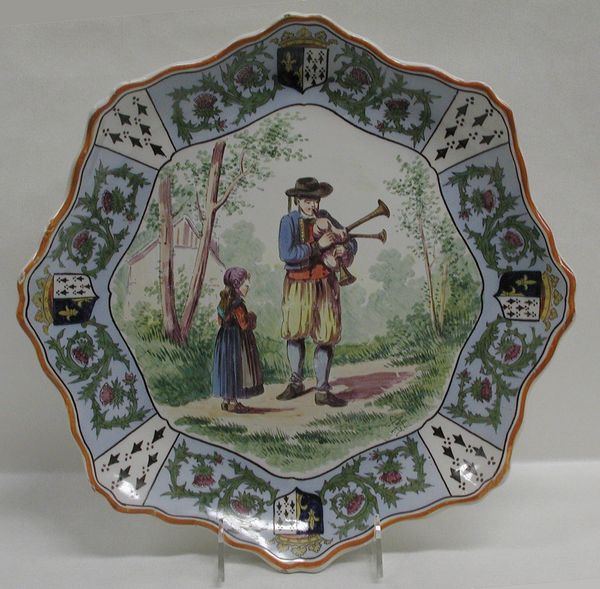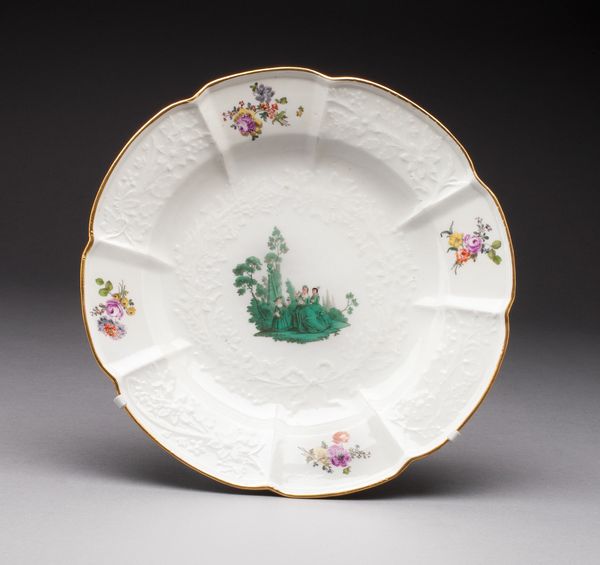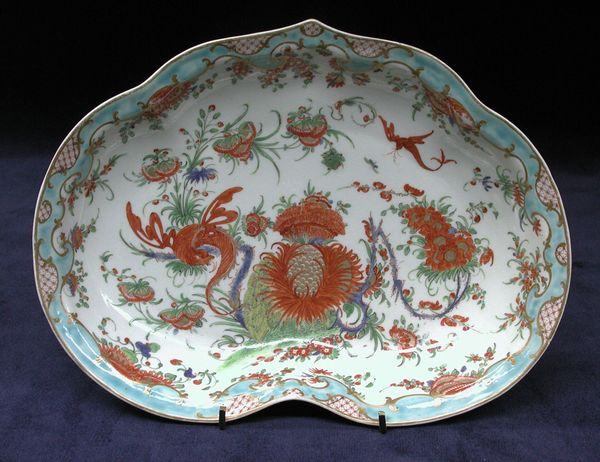
ceramic, sculpture
#
portrait
#
baroque
#
landscape
#
ceramic
#
bird
#
folk-art
#
sculpture
#
ceramic
#
genre-painting
#
decorative-art
Dimensions: Overall: 1 1/8 × 9 3/4 × 7 1/2 in. (2.9 × 24.8 × 19.1 cm)
Copyright: Public Domain
Curator: Standing before us is a delightful piece of ceramic artistry: "Dish (one of a pair)," crafted by Felice Clerici sometime between 1745 and 1755. It is currently held in the collection of the Metropolitan Museum of Art. Editor: The color palette immediately strikes me; there is such a sense of bucolic reverie. That delicate red outline that frames the piece truly enhances its whimsical charm, I'd say. Curator: Indeed, there's a carefully constructed folk narrative embedded here, reflecting the social pastimes and visual culture of its time. I am intrigued by how this ceramic piece invites discussions around class, leisure, and even colonial trade, considering its medium. Editor: Let’s not forget the symbiosis of decorative elements. Notice how the figure is positioned perfectly between the verdant trees. The color echoes are masterfully conceived. See the echoes in the figure's drapery. This directs our vision to that central character. A study in contrasts with nature. Curator: That is interesting in its form, particularly because the figure's posture, and indeed the birds above him, bring the tensions between labor and freedom to mind. In the face of colonial narratives that might see labor through an exploitative gaze, we can consider this artwork's figure as presenting a resistance. A claiming of space, not as property but as presence. Editor: You speak of resistance. But it is important to note how Clerici uses symmetry here to instill balance; two trees mirroring each other and drawing attention to the individual at center. Is this figure perhaps a reference to Adam? Curator: Or perhaps something more earthbound; I'm reminded how these folk-art renderings frequently depict specific ethnic or cultural communities, drawing them into conversation about visibility and representation in larger society. In its moment, such images held layered socio-political implications for identity and belonging. Editor: Your insights are invaluable for unveiling what lies beneath the veneer of decorous charm. It shows how vital interdisciplinary methodology is. Curator: It works vice versa! By pointing out visual balances you’re directing my focus to certain design attributes that bring even further socio-historical elements to light. Editor: Exactly. That visual architecture offers narrative frameworks for discussing social contexts that continue reverberating through centuries!
Comments
No comments
Be the first to comment and join the conversation on the ultimate creative platform.
